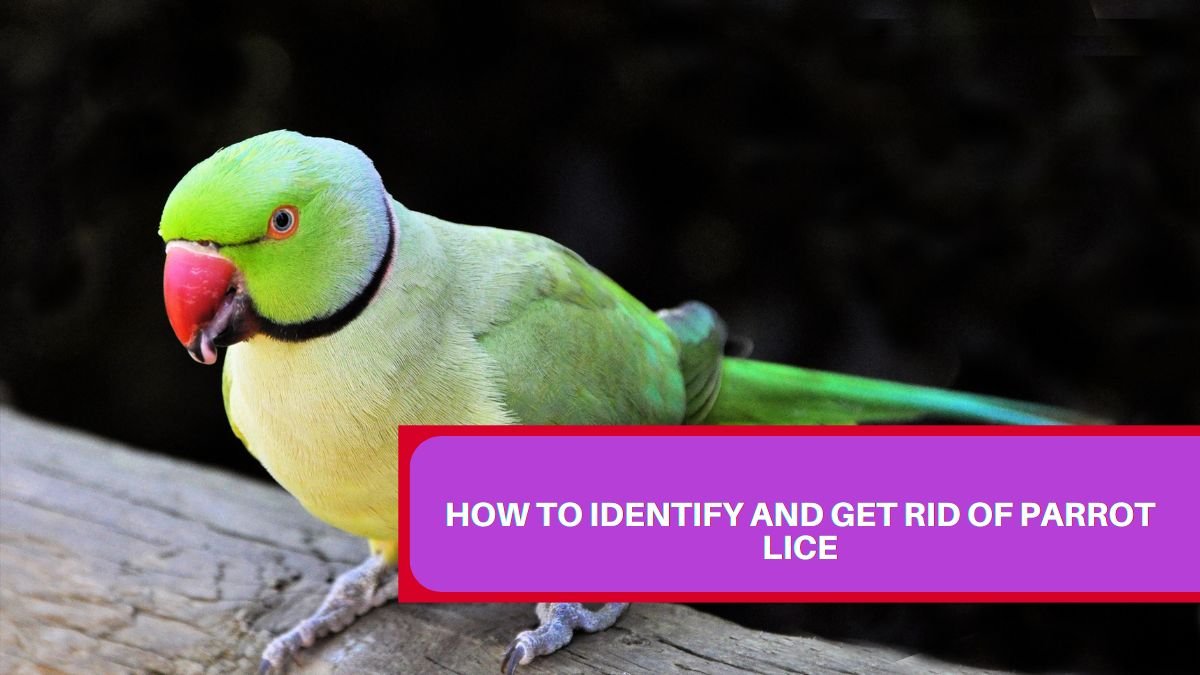Parrot lice are a common concern for bird owners, as these tiny parasites can cause discomfort and health issues for your feathered friend. Understanding how to identify, treat, and prevent lice infestations is crucial for maintaining your parrot’s well-being. This article will guide you through the process of identifying parrot lice, understanding their impact, and effectively eliminating them from your pet and environment.
Identifying Parrot Lice
1. What Are Parrot Lice?
Parrot lice are small, wingless insects that feed on the skin scales and feather debris of birds. Unlike some other parasites, they do not suck blood but can still cause significant irritation and discomfort. The most common types of lice affecting parrots are the feather lice, which live on the bird’s body throughout their life cycle.
2. Signs of Infestation: Identifying a lice infestation can be challenging, as these pests are often too small to see with the naked eye. However, there are several signs to look for:
- Excessive Scratching: If your parrot is scratching more than usual or appears restless, it may be suffering from lice.
- Visible Lice or Nits: In severe cases, you may see small brownish insects crawling through your bird’s feathers or notice tiny white eggs (nits) attached to the shafts of feathers.
- Feather Damage: Lice infestations can lead to damaged or missing feathers, giving your bird a scruffy appearance.
- Behavioral Changes: Increased irritability or changes in grooming habits can also indicate a problem.
If you suspect your parrot has lice, it is best to consult an avian veterinarian for a definitive diagnosis and treatment plan .
Treatment Options
3. Veterinary Consultation: The first step in treating parrot lice is to seek professional help. An avian veterinarian can confirm the presence of lice through examination and provide appropriate treatments. Over-the-counter products may not be effective and can potentially harm your bird if misapplied .
4. Approved Treatments: Once diagnosed, your veterinarian may recommend specific treatments such as:
- Lice Sprays: Pyrethrin-based sprays are commonly used to treat lice in birds. These sprays are generally safer than older chemicals but should still be applied carefully according to the vet’s instructions .
- Shampoos: Specialized shampoos designed for birds can help eliminate lice when used correctly.
- Oral Medications: In some cases, oral medications may be prescribed to control infestations.
Always avoid using human lice treatments on birds, as these can be toxic and ineffective .
Cleaning and Preventing Reinfestation
5. Thorough Cleaning: After treating your parrot for lice, it is essential to clean its environment thoroughly to prevent reinfestation:
- Cage Cleaning: Remove all bedding and toys from the cage. Scrub all surfaces with a bird-safe disinfectant, paying special attention to corners and crevices where lice may hide.
- Washing Linens: Wash any fabric items that come into contact with your bird in hot water to kill any lingering pests.
- Vacuuming: Vacuum the area around the cage regularly to remove any fallen feathers or debris that could harbor eggs or larvae.
6. Quarantine Affected Birds: If you have multiple birds, isolate the affected parrot from others during treatment. This helps prevent the spread of lice among your pets . Even if other birds appear healthy, it’s wise to have them checked by a veterinarian.
Long-Term Prevention Strategies
7. Regular Health Checks: Routine veterinary check-ups are vital for early detection of potential issues like lice infestations. Regular health assessments allow for timely intervention before problems escalate.
8. Maintain Hygiene: Keeping your parrot’s living environment clean is crucial in preventing future infestations. Regularly clean the cage and surrounding areas, ensuring that food and water dishes are also sanitized.
9. Monitor Behavior: Keep an eye on your bird’s behavior and grooming habits. Any sudden changes could indicate a return of lice or other health issues.
Conclusion
Identifying and eliminating parrot lice requires vigilance and proactive care from pet owners. By understanding how to spot signs of infestation, seeking veterinary assistance for treatment, and maintaining a clean environment for your bird, you can effectively manage this common issue.Remember that while parrot lice do not pose a direct threat to humans, they can significantly affect your pet’s quality of life if left untreated. Regular monitoring and good hygiene practices will help ensure that your feathered companion remains healthy and happy in their home environment. If you notice any signs of distress or infestation in your parrot, don’t hesitate to reach out to an avian veterinarian for guidance and support
